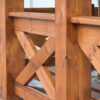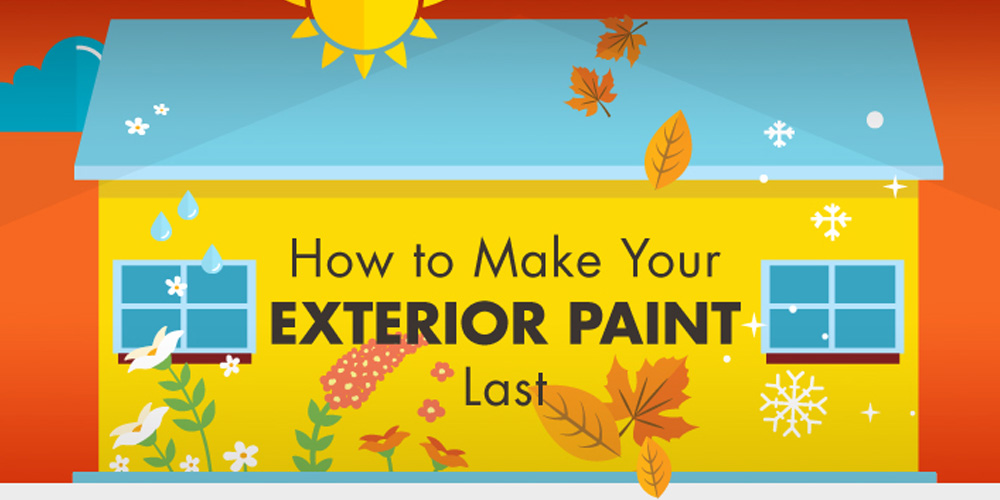
A fresh exterior paint job doesn’t just add curb appeal—done right, it can help protect your home from potentially expensive problems like mold and rot. In most climates, it’s recommended you invest in a professional exterior paint job every five to ten years, depending on the severity of recent weather.
If your latest exterior paint job was completed less than five years ago, then you can probably get away with maintaining it and summer is the best time to tackle that. Now that the snow has melted and the weather is warming up, it’s time to make sure you’re taking the best possible care of your exterior paint. If the job was done well by careful professionals using quality exterior paints, you shouldn’t have too much to worry about—but snoozing on maintenance can end up costing you money down the line, so it’s worth your time to upkeep it.
The three things to remember as you’re assessing the condition of your exterior are: keep it clean, keep it dry, and touch it up.
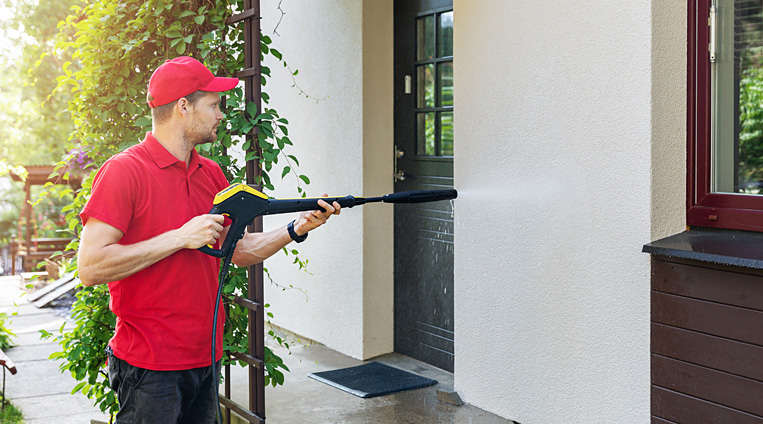
KEEP IT CLEAN
The idea of washing your house may seem odd, but it shouldn’t—industry pros know it’s a critical way to extend the life of your paint job.
No matter what climate you’re in, dirt and debris will accumulate on your exterior, and in that dirt and debris are harmful salts that can erode paint with surprising speed if left to build up. To prevent that build-up, give your house a yearly scrub down.
If you know what you’re doing, a pressure washer may be the right tool for the job—but when in doubt, don’t risk DIYing it. You can hire professionals to power wash your home for you, especially if your house is large and you aren’t a fan of ladders, or if you’ve had an especially rough season that may have left some damage.
If your paint is still looking pretty fresh and you can manage the task yourself, a garden hose can do the trick just fine. On those noticeably dirty spots, use a mild detergent and sponge or scrub brush.
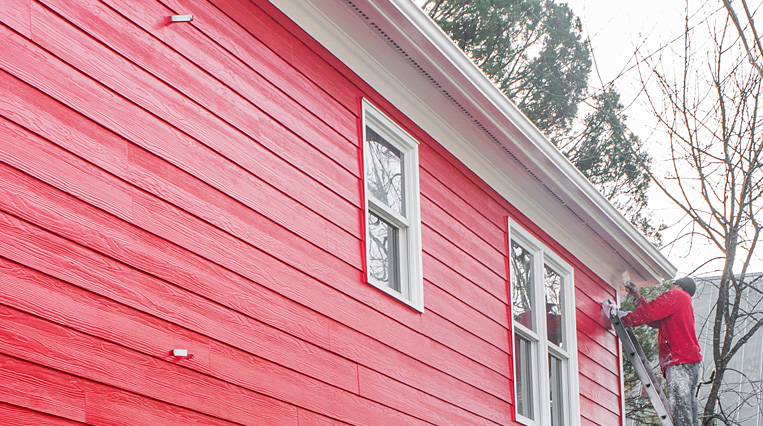
KEEP IT DRY
If water can carve the Grand Canyon, it can certainly erode your home’s paint. Houses are made to be rained on, of course—but acute moisture build-up is the biggest offender when it comes to your exterior paint, so preventing it is key. As you’re scrubbing down your exterior, pay extra attention to:
- Gutters: Make sure your gutters and downspouts aren’t leaking against your home—get them cleaned and maintained regularly to make sure they aren’t causing any problems.
- Sprinklers: A rogue sprinkler can basically drill a hole into your paint. Check to make sure all sprinklers are spraying away from your house.
- Snow: In winter months, when possible, try not to let snow build up against your house. As the weather warms up, avoid letting shaded piles of snow sit for too long—as they melt and re-freeze, they can leech moisture into your exterior, or even cause cracking.
- Mildew and Mold: Check your home for mildew and—especially on the north-facing side—mold. Clean mild mildew with a small amount of bleach diluted in water. If you notice any mold, fungus, or soft spots, get it professionally inspected and repaired ASAP.
- Plants: Your garden loves moisture, so try to keep a margin of space between your outdoor plants and your home’s exterior. Keep your yard groomed and trees trimmed. If you love the look of ivy, use lattice work to prevent it from damaging your home. Pay extra close attention to areas behind bushes and lattice work as you’re looking for dirt and damage, and act quickly to get any necessary repairs.
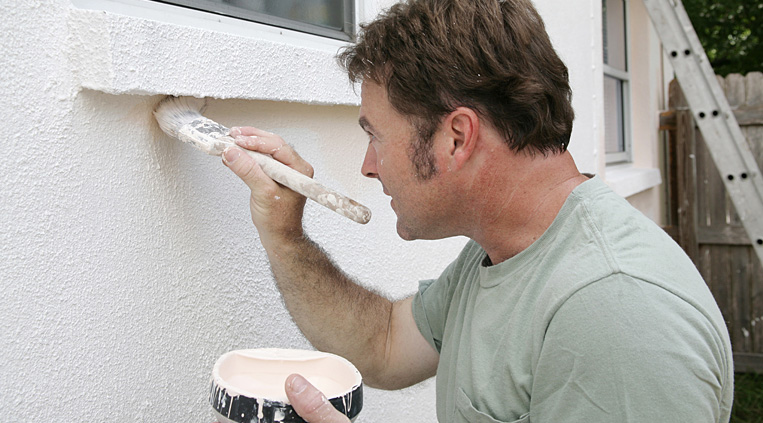
TOUCH IT UP
Even if you don’t have any serious issues like mold, touch ups are an inexpensive way to make sure your exterior paint lasts. In addition to obvious damages, look for areas that may have just taken a particularly rough seasonal beating, and have them touched up before you need an entire new paint job.
Your exterior paint is the first thing people notice about your home—and a little effort will go a long way to keeping it looking its best without costing you a fortune. A good paint job isn’t cheap, so get the most bang for your buck by spending some time this summer taking care of it.




